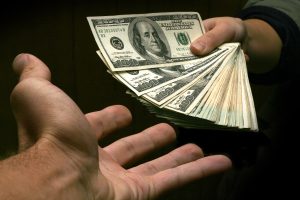Understanding consumer behavior has long been a fascination for marketers, economists, and psychologists alike. Why do people buy what they buy? What influences their purchasing decisions? The answers lie in the intricate workings of the human mind. This article delves into the psychology of spending, exploring the underlying factors that drive consumer behavior and unraveling the mysteries behind our purchasing choices.
Factors Influencing Consumer Behavior

- Psychological Factors
- Perception: Perception plays a crucial role in shaping consumer behavior. How individuals perceive products, brands, and advertisements greatly influences their purchasing decisions. Marketers capitalize on this by crafting messages that appeal to consumers’ senses and emotions.
- Motivation: Human behavior is driven by various needs and desires, such as physiological, safety, social, esteem, and self-actualization needs, as proposed by Maslow’s hierarchy. Understanding these motivations helps marketers create products and campaigns that fulfill consumers’ desires and aspirations.
- Attitudes and Beliefs: Consumers’ attitudes and beliefs towards a product or brand significantly impact their likelihood of purchasing. Positive attitudes and strong brand loyalty can lead to repeat purchases, while negative perceptions can deter consumers from buying.
- Social Factors
- Social Influence: People are inherently social beings, and their purchasing decisions are often influenced by social factors such as reference groups, family, friends, and societal norms. For example, individuals may be more inclined to purchase products endorsed by celebrities or recommended by their peers.
- Culture: Cultural values, norms, and traditions shape consumers’ preferences and behaviors. What is considered desirable or acceptable varies across cultures, influencing everything from product design to marketing strategies.
- Personal Factors
- Demographics: Factors such as age, gender, income, education, and occupation play a significant role in shaping consumer behavior. Different demographic groups have distinct preferences and purchasing patterns, which marketers must take into account when targeting their audience.
- Lifestyle and Personality: Consumers’ lifestyles and personalities influence their consumption choices. For example, individuals with adventurous personalities may be more inclined to try new products or experiences, while those with a frugal lifestyle may prioritize saving over spending.
The Influence of Marketing Strategies
Marketers employ various strategies to influence consumer behavior and drive sales. These include:
- Advertising: Through persuasive messages and creative imagery, advertising aims to capture consumers’ attention and influence their perceptions and preferences.
- Brand Positioning: Establishing a strong brand identity and positioning helps differentiate products from competitors and build brand loyalty among consumers.
- Pricing Strategies: Pricing decisions can significantly impact consumers’ perceptions of value and willingness to purchase. Strategies such as discounts, bundling, and psychological pricing tactics (e.g., $9.99 instead of $10) are commonly used to influence buying behavior.
- Promotions and Discounts: Limited-time promotions, sales events, and discounts create a sense of urgency and incentivize consumers to make purchasing decisions.
Understanding Consumer Decision-Making
Consumer decision-making is a complex process influenced by a multitude of factors. To better understand this process, marketers often use models such as the consumer decision-making process, which consists of five stages:
- Problem Recognition: Identifying a need or want that triggers the decision-making process.
- Information Search: Gathering information about available options to satisfy the identified need.
- Evaluation of Alternatives: Assessing the pros and cons of different options based on criteria such as price, quality, and features.
- Purchase Decision: Choosing the product or brand that best meets the consumer’s needs and preferences.
- Post-Purchase Evaluation: Reflecting on the decision and assessing whether it met expectations.
Analysis Table: Factors Influencing Consumer Behavior
| Factors | Description |
|---|---|
| Psychological | Perception, motivation, attitudes, and beliefs. |
| Social | Social influence, culture. |
| Personal | Demographics, lifestyle, personality. |
| Marketing Strategies | Advertising, brand positioning, pricing, promotions and discounts. |
| Decision-Making | Problem recognition, information search, evaluation of alternatives, purchase decision, post-purchase evaluation. |
Comparative Table: Marketing Strategies
| Strategies | Description |
|---|---|
| Advertising | Persuasive messages and creative imagery to influence perceptions and preferences. |
| Brand Positioning | Establishing a strong brand identity and differentiation to build brand loyalty. |
| Pricing Strategies | Influence perceptions of value and willingness to purchase through pricing decisions. |
| Promotions | Limited-time offers, sales events, and discounts to create urgency and incentivize purchases. |
Conclusion
Consumer behavior is a fascinating field that combines insights from psychology, sociology, and economics. By understanding the psychological factors, social influences, and personal preferences that drive consumer behavior, marketers can develop more effective strategies to attract and retain customers. Ultimately, unraveling the mysteries of consumer behavior requires a holistic approach that takes into account the complex interplay of internal and external factors shaping purchasing decisions.




